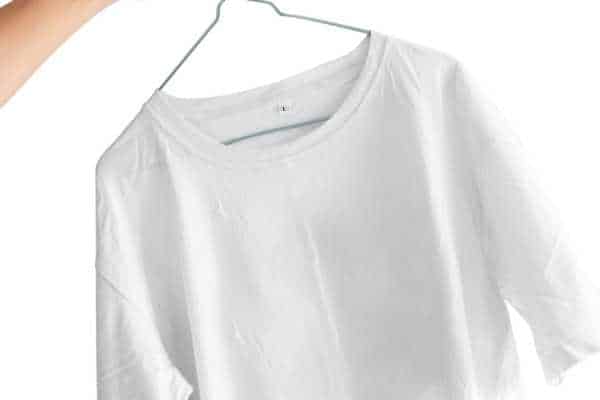Compression shirts have become increasingly popular among athletes and fitness enthusiasts due to their ability to enhance performance and aid in recovery. These tight-fitting garments are designed to compress the muscles, improve blood flow, and reduce muscle fatigue. Like any other piece of clothing, these shirts have a lifespan and need to be replaced at some point.
Knowing when to replace a top can be tricky, as it largely depends on how often it is worn and how well it is cared for.

Holes, tears, and stretching are obvious indicators that it is time for a replacement. This can lead to a loss of support, decreased breathability, and odor retention.
To ensure optimal performance and longevity, it is important to understand how long they last and the best ways to properly care for them.
Key Takeaways
- Compression shirts need to be replaced when they show signs of damage, such as holes, tears, and stretching.
- Performance considerations such as loss of stretchiness, decreased breathability, and odor retention are also indicators that it is time for a replacement.
- Proper care and maintenance can extend the life of your shirts, but they should still be replaced periodically to ensure optimal performance.
Signs of Wear and Tear
Compression shirts are designed to provide maximum support and comfort during physical activities. These shirts become worn out and lose their effectiveness. Here are some signs that indicate it’s time to replace your shirt.
Fabric Stretching
One of the most common signs is fabric stretching. It will lose its elasticity, causing it to stretch out and become loose. This can result in reduced support, making the shirt less effective.
Elasticity Loss
The elastic fibers in the fabric break down over time, causing the shirt to lose its ability to stretch. This can result in reduced support and comfort during physical activities.
Visible Damage
Clear indications your performance top needs to be replaced include holes, tears, and frayed seams. Not only does visible damage affect the effectiveness, but it can also be a safety hazard during physical activities.
It’s important to replace your garment when you notice any of these signs to ensure maximum comfort and effectiveness during physical activities.
Performance Considerations

If you are wondering when to replace compression shirts, here are several performance factors that should be taken into account.
Compression Level
These shirts are designed to provide a certain level of snugness to the muscles. Over time, the level may decrease due to stretching of the fabric.
Material Degradation
The material will break down over time due to exposure to sweat, washing, and drying. This can lead to a loss of elasticity and support, as well as the formation of holes or tears in the fabric.
Comfort and Fit
Your shirt should fit snugly to provide the desired level of performance. Over time the fabric may stretch or lose elasticity, resulting in a looser fit that can compromise its effectiveness. Additionally, changes in body weight or shape may require a different size or fit.
Lifespan Expectancy
Like any other piece of clothing, compression shirts won’t last forever. In this section, we’ll cover how long you can expect your shirt to last and the factors that affect their durability.
Average Lifespan
The average lifespan of a compression shirt is around six months to a year, depending on the frequency of use and the quality of the material.
Products made using high-quality materials can last longer than those made of low-quality fabrics.
Factors Affecting Durability
Several factors can affect the durability. The following are some of the most common factors:
- Frequency of use: The more you wear your garment the sooner it will need to be replaced. Consider purchasing several shirts and rotating them.
- Washing and drying: Cold water and air drying will prevent fabric damage. High heat will damage the elasticity of the material.
- Quality of the material: High-quality materials will last longer than those made of low-quality materials.
- Fit: A shirt that is too tight or too loose can cause damage to the fabric.
It is important to take proper care of them and replace them when they show signs of damage.
Care and Maintenance
To ensure that they last longer and maintain their effectiveness, proper care and maintenance are essential.
Washing Instructions

It is recommended to wash after every use to remove sweat, dirt, and bacteria that can accumulate on the fabric. Improper washing can damage the material.
To wash compression shirts, follow these instructions:
- Use cold water and a gentle detergent to prevent shrinkage and damage to the fabric.
- Avoid using bleach, fabric softeners, or dryer sheets as they can break down the elasticity of the material.
- Wash the shirt inside out to prevent pilling and protect the logos and prints.
- Hand washing is the best option, but if machine washing is necessary, use a delicate cycle and put the shirt in a laundry bag.
- Air dry the shirt by laying it flat or hanging it up. Avoid using a dryer as it can damage the fabric.
Storage Tips

Proper storage is also an essential factor to consider. Here are some tips to follow:
- Store the shirt in a cool and dry place away from direct sunlight to prevent fading and damage to the fabric.
- Do not fold the shirt as it can cause creases that can damage the material. Instead, lay it flat or hang it up.
- Avoid storing the shirt in a damp or humid place as it can promote the growth of bacteria and mold on the fabric.
- Do not store the shirt with other clothes or items that can snag or damage the fabric.
Replacement Frequency
Compression shirts are designed to provide support. With time and use, they will lose their effectiveness.
Regular Users
For individuals who wear their shirts for everyday activities, such as work or leisure, the shirts can last up to a year or more with proper care.
It is recommended to wash the shirts after each use and avoid using fabric softeners or bleach as they can damage the fabric.
Signs that the shirt needs replacement include loss of elasticity, holes, tears, or an unpleasant odor.
Athletic Use
For people who wear performance shirts for intense physical activities, such as running, weightlifting, or sports, the shirts may need to be replaced more frequently.
When to replace them will depend on your activities and how often you use them.
High-quality compression shirts, such as Nike and Under Armour, can last up to six months or more with proper care, while lower-quality brands may need to be replaced more frequently.
FAQ
What are the signs that indicate it’s time to get a new compression shirt?
These garments are designed to provide support and compress the muscles during workouts. Over time, the elasticity of the fabric can wear out, and the shirt may no longer provide the same level of performance.
Can the lifespan of a compression shirt be extended with proper care?
Yes, with proper care you can expand the life cycle of your shirts. It’s recommended to wash the shirt after each use with cold water and mild detergent. Avoid using fabric softeners or bleach, as they can damage the fabric. Hang the shirt to dry instead of using a dryer, as the heat can damage the elasticity of the fabric.
What factors contribute to the wear and tear of compression garments?
Key factors to consider include the frequency of use, the intensity of workouts, and the quality of the fabric. Higher-quality compression garments will last longer and provide better support over time.
Is there a recommended timeframe for replacing workout compression apparel?
As a general rule, it’s recommended to replace compression apparel every six months to a year to ensure optimal support.
What maintenance tips can help preserve the elasticity of compression clothing?
It’s important to wash the garments after each use with cold water and mild detergent. Avoid using fabric softeners or bleach, as they can damage the fabric. Hang the garments to dry instead of using a dryer, as the heat can damage the elasticity of the fabric.

Rick Huey is a fitness writer who has dedicated his life to living an active lifestyle. With more than 30 years of experience in the fitness industry, Rick is a respected contributor for FitFab50.com, where he shares his wealth of knowledge with a wide audience. His dedication to promoting the benefits of living an active lifestyle has inspired many people to pursue their own fitness journeys with enthusiasm and dedication.
